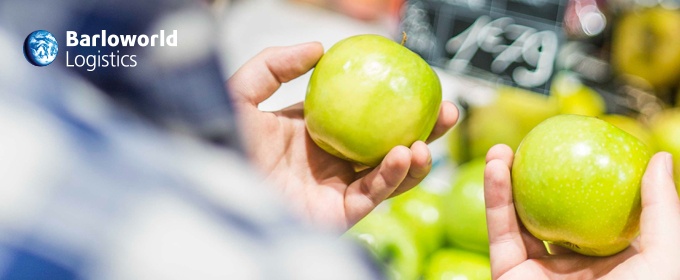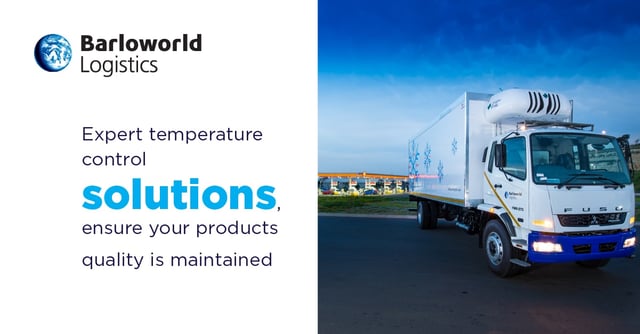
Within logistics and supply chain management, perishable food and pharmaceutical products make up a large part of the country’s supply chain. Transporting product while maintaining temperature may sound like a modern solution, but the first forms of cold chain logistics began as early as the 1800’s with fishermen and farmers using natural ice to preserve their produce for transportation to market. Fredrick McKinley Jones designed a portable air-cooling unit for trucks in 1935, and the modern form of cold chain was born. In South Africa, our love of ice cream means that our local cold chain needs to store and distribute over 60 million tonnes of frozen treats a year. Taken in isolation this volume is impressive, but once consider together with every other item requiring a temperature controlled supply chain – the demand for local cold chain becomes staggering.A cold chain refers to any supply chain in which a measure of temperature control is required to maintain the integrity of the product transported. From ambient, through to chilled and frozen, each product requires a different set of handling rules to be followed to ensure that it reaches consumers in the form, and quality, that was intended by the manufacturer. This niche service within supply chain management is unsurprisingly complex, and requires smart solutions, using the latest technology to deliver on customer requirements.
Here are some interesting facts that you didn’t know about temperature controlled supply chains:
- Before the invention of the refrigerated vehicle, fresh produce for sale could only be transported about 80 km’s from source – assuming the produce was taken to market on the day it was picked. The invention of cold chain transportation is considered to be one of the 50 things that contributed to the modern-day economy thanks to its marked impact on the expansion of the fresh and frozen global food market.
- The most common temperature requirements in cold chain are, chill (2°C), frozen (-18 °C) and deep frozen (-29 °C). Ambient or room temperature refers to temperatures between 8°C and 15°C.
- A standard shipping container costs approximately R80 000 but a refrigerated unit (commonly known as a reefer unit) can cost up to 6 times that.
- Refrigerated vehicles have a power source for cooling independent of the vehicle itself to maintain temperature even when the vehicle is switched off.

- It is estimated that post-harvest losses of fruit in Southern Hemisphere countries exceed the total harvest in the northern hemisphere simply due to the hotter daytime temperature in the fields where produce is picked.
- Cocoa beans used in the manufacturing of coffee need ambient temperature transportation. Should temperatures drop too low, a chemical reaction occurs within the beans, requiring more fat to be added during the manufacturing process to achieve the same viscosity of product – this not only changes the taste of the coffee but makes it more expensive.
- The common temperature range for pharmaceuticals is between 2°C and 8°C, although each product dictates its specific temperature tolerances.
- Vaccines transported at temperatures outside of this range become ineffective, and if administered, put patients at greater risk. The risk of vaccine degradation through temperature fluctuations makes distributing vaccines to rural communities in sub-Saharan Africa particularly challenging.
- Humanitarian logistics creates additional challenges for the cold chain. During the Japanese Earthquake crisis of 2011, there was a shortage of blood plasma, and the required resources were flown from the USA. Upon arrival in Japan, tests concluded that the plasma was damaged. An investigation found that during a stopover in Alaska, extreme outside temperature had frozen the plasma. This example highlights the importance of maintaining the precise temperature required – any deviation, up or down, can be devastating – particularly during a crisis.
- There are over 80 million shipments of medical product shipped globally per year, each with unique temperature requirements. Further to this, some products cannot be exposed to light, moisture or high air pressure – limiting the mode of transport on which they can be transported
- The Occupational Health and Safety Act, 1993 states that no-one is allowed to work in a cold storage unit at a temperature between -18°C and -37°C for longer than 50 minutes at a time, without a 10-minute break at room temperature. All employees working in such an environment require specialised freezer suits, gloves, socks, boots and a balaclava to ensure their safety.
- Within warehouses, temperature monitoring relies on technology, but computers are not built to operate in sub-zero temperatures and are therefore housed in protected areas to minimise damage from the cold and condensation within chilled warehouses
- Cold chain technology far exceeds the maintenance of temperature. Monitoring of loads has become vital in the maintenance of an uninterrupted cold chain – and technologies such as temperature sensors, GPS tracking, self-reporting alerts, humidity monitors and internal thermostats all contributed to the success of temperature controlled logistics.
These facts are just the tip of the proverbial iceberg when it comes to the complexity of cold chain distribution and warehousing. They serve to highlight the value not only of understanding your products unique requirements but underscore the importance of partnering with a supply chain provider that specialises in this niche field of supply chain management.
Read: Maintaining Product Integrity with Smart Temperature Controlled Solutions



